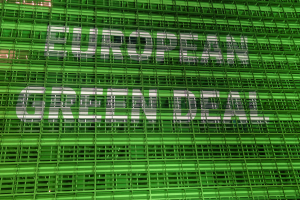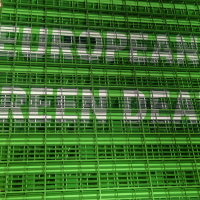
As we enter a new political mandate and following the European Green Deal’s wave of initiatives and legislation from the last, the impacts from evolving and emerging horizontal legislation up- or downstream within the value chain are set to impact manufactures and consumers alike from the mid-2020s onwards.
Natural Substance Classification
Cosmetics require a wide range of substances to ensure diverse and innovative products. Natural and organic cosmetics (NOCs) are no different, except that the palette of ingredients includes not only isolated substances, but also natural complex substances (NCSs) like plant extracts (including essential oils).
Last December, the provisional agreement on the revision of the Classification, Labelling, and Packaging Regulation (CLP) was published. A key point for NOCs is the application of mixture classification rules to NCSs. NCSs fall into the definition of substances with more than one constituent (MOCS) and, according to the CLP text, if a MOCS is classified due to its constituent(s), a mixture containing this MOCS is classified based on the percentage of those constituent(s) in the mixture. To this end, the text indicates that the classification of substances for CMR, endocrine disruption, persistency, mobility or bioaccumulation is based on the classified constituent and not on the substance data.
For NCSs, this creates an integral problem since the presence of an unavoidable and irremovable composite could negatively impact the whole NCS. Fortunately, the agreed text allows for a derogation for plant extracts that are not chemically modified, pending a scientific report after 5-years legislative proposal if necessary. Nevertheless, we have already seen one key NCS, p-cymene (found in ca. 350 NCSs including aromatic plants extracts from thyme and oregano), is under review at ECHA CMR category 1B, which risks a future collision with Article 15 of the existing Cosmetics Regulation and a high impact on the sector overall if the issue of MOCS is not managed appropriately. Official publication in the OJEU is expected later in 2024.
(Green) Claims and Consumer Protection
On 27 March 2024, Directive (EU) 2024/825 came into force, amending the existing Unfair Commercial Practices Directive (UPCD). Whilst the UPCD can already be used to address greenwashing, the targeted amendments in Article 6 and 7 (misleading actions and omissions respectively) and additional bans (Annex I “blacklist”) are aimed at facilitating enforcement and levelling the playing field. Specifically, articles 6 and 7 cover the main characteristics of a product – including environmental or social characteristics, the ban on unverified environmental claims related to future performance, and materials necessary for product comparisons. For the NOCs, the Annex I blacklist is perhaps the most interesting since generic environmental claims (e.g., biodegradable, biobased), claims about the entire product when it concerns only a specific aspect, and the use of voluntary sustainability labels unless based on a third-party certification scheme or established by public authorities are all banned. Although neither natural (nor organic) appears on Annex I, it remains to be seen precisely how Member States may eventually view such claims. Member States have two years to transpose the text to national law with application of the Directive from 27 September 2026. Since regulatory scope is horizontal, all sectors are covered although the directionality is B2C.
The companion to Directive (EU) 2024/825 is the Green Claims Directive (GCD), which sets specific rules for explicit environmental claims and labels within the same horizontal scope and B2C application. To-date, the Parliament and Council have adopted their positions, and the process is expected to enter the trilogue phase later this year following the European Elections. Whilst robust ex-ante verification of claims and labels remains, the Council position introduces the concept of a simplified procedure as a pragmatic proposal to exempt certain types of explicit environmental claims for eligible operators. For NOCs, there is support for existing private label schemes even if these will need to ensure compliance with the framework of these Directives to ensure continued use after their application.
Future steps
Given that environmental claims increasingly play an important role in consumer orientation, a robust and complimentary framework will be essential to support informed decision making based on reliable, verifiable and comparable information. Ultimately, with two interconnecting anti-greenwashing Directives, consistency between the final texts is crucial to avoid any potential conflict that could derail their joint objective.
Additionally, harmony with other legislative acts is important, and, as with all the Green Deal initiatives, a clear balance needs to be struck between the expectations of the environmental and social sustainability objectives and the reality of the economic sustainability and capacities of the market. Such a framework is essential for promoting sustainable innovation, fostering consumer empowerment and confidence, and, for NOCS, ensuring that manufacturers can continue to make substantiated environmental claims through long-term trusted label schemes like NATRUE.
We have yet to see a proposal for revisions of REACH or the Cosmetic Regulation (CPR), which now may come in 2025 or beyond. Nevertheless, as the transition towards a greater sustainable footprint continues to take hold, cosmetic manufacturers will need to adapt to an increasingly intricate and complex web of regulatory compliance outside the CPR.

Article written by Dr Mark Smith, NATRUE”s Director General, and originally published on Bio Eco Actual’s website (available in English, Spanish, and Catalan)



 Deutsch
Deutsch
 Español
Español
 Français
Français
 Italiano
Italiano